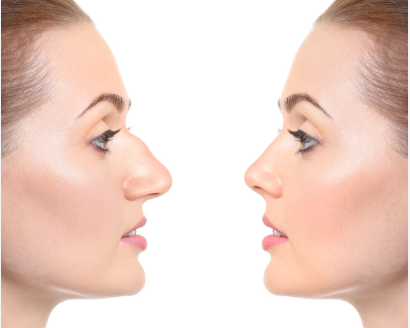Introduction
How Much Does a Nose Job Cost? Understanding the Price of Rhinoplasty,Nose jobs, or rhinoplasty, are one of the most sought-after cosmetic procedures worldwide. Whether you’re considering a nose job to improve your appearance or to address breathing problems, understanding the costs involved is crucial. This comprehensive guide will break down the factors that influence the price of a nose job and provide insight into what you can expect to pay based on your unique needs and location.
What is Rhinoplasty?
Rhinoplasty is a surgical procedure aimed at altering the shape or function of the nose. It can be performed for cosmetic reasons, to correct congenital deformities, or to repair the nose following trauma. The procedure involves reshaping the bone, cartilage, or skin of the nose to enhance its appearance or to improve airflow, depending on the patient’s needs.
Factors That Influence the Cost of a Nose Job
The cost of rhinoplasty can vary significantly depending on several factors. Understanding these elements will help you get a more accurate estimate of how much your nose job will cost.
1. Geographic Location
Where you have your surgery done plays a huge role in the overall cost of rhinoplasty. Costs can vary by country, state, or city. For example, major metropolitan areas with high living costs—such as New York City, Los Angeles, or Miami—tend to have higher surgery fees than smaller towns or rural areas.
2. Surgeon’s Experience and Expertise
The skill and experience of the surgeon performing the rhinoplasty is one of the most important factors when determining cost. Highly skilled and experienced surgeons, particularly those with specialized expertise in rhinoplasty, typically charge higher fees for their services. Surgeons with a proven track record of successful procedures may offer more precise results, which many patients are willing to pay extra for.
3. Type of Rhinoplasty Procedure
There are different types of rhinoplasty procedures, and the method you choose can affect the final price. Broadly, these include:
- Open Rhinoplasty: This involves making an incision across the columella (the skin between the nostrils) to access the underlying structures of the nose. Open rhinoplasty is typically used for more complex cases and can cost more due to the intricate nature of the procedure.
- Closed Rhinoplasty: In this approach, incisions are made inside the nostrils, meaning there is no visible scarring. This is often suitable for less complex cases and may be less expensive.
- Revision Rhinoplasty: If you’ve previously had a nose job but are unhappy with the results, a revision rhinoplasty may be required. This is generally more costly than primary rhinoplasty because it involves correcting previous surgical mistakes or reshaping the nose after healing.
- Non-Surgical Rhinoplasty (Liquid Rhinoplasty): This procedure uses injectable fillers to reshape the nose without surgery. It’s a more affordable option but is temporary, typically lasting between 6 months and 2 years.
4. Anesthesia Fees
General anesthesia or local anesthesia is typically required during rhinoplasty. The anesthesia fee can add several hundred to a few thousand dollars to your overall surgery cost, depending on the length of the procedure and the type of anesthesia used.
5. Surgical Facility and Hospital Fees
The location where your rhinoplasty is performed also contributes to the cost. High-end surgical facilities, especially those with accreditation and specialized equipment, may charge more than smaller or less equipped clinics. If the procedure takes place in a hospital rather than a private surgical center, expect higher facility fees.
6. Post-Operative Care
After your rhinoplasty, follow-up appointments and post-operative care can also add to the cost. These visits ensure that the healing process is progressing as expected and help monitor for any complications. You may also need prescription medications or special supplies, like nasal splints or bandages, which can add to the total cost.
7. Insurance and Financing
If the rhinoplasty is medically necessary (such as to correct a breathing issue or repair a broken nose), your health insurance may cover a portion of the costs. However, cosmetic rhinoplasty is typically not covered by insurance. Some patients opt for financing options, which allow them to pay for the procedure in installments, often with low or no interest.
Average Cost of Rhinoplasty
Now that we’ve covered the factors affecting the price, let’s take a look at the average cost of a nose job in different scenarios.
United States Cost Range
In the United States, the cost of rhinoplasty typically ranges from $5,000 to $15,000. This wide range depends on the factors mentioned above, including the surgeon’s experience, the complexity of the procedure, and the geographic location.
- Cosmetic Rhinoplasty: For purely aesthetic procedures, prices tend to range between $5,000 and $10,000.
- Functional Rhinoplasty (for breathing issues): These surgeries generally cost between $7,000 and $15,000.
- Revision Rhinoplasty: Revision procedures tend to be more expensive, with costs ranging from $7,500 to $20,000 or more.
Non-Surgical Rhinoplasty
For non-surgical rhinoplasty (using fillers), the cost is significantly lower, typically ranging from $600 to $2,500 depending on the type of filler used and the area being treated. However, these results are not permanent and will need to be redone every 6 months to 2 years.
International Rhinoplasty Costs
If you’re considering undergoing a rhinoplasty procedure abroad, the costs can vary widely by country, though they are generally lower than in the U.S. Some countries known for offering affordable rhinoplasty include:
- Mexico: Average cost between $2,500 and $5,000.
- Turkey: Average cost between $2,000 and $5,000.
- Thailand: Average cost between $3,000 and $7,000.
However, when considering international surgery, it’s crucial to factor in travel expenses, post-operative care, and the potential risks associated with medical tourism.
How to Save on Your Nose Job
Although rhinoplasty can be expensive, there are a few ways to make the procedure more affordable without compromising on quality.
1. Consider Financing Options
Many cosmetic surgeons offer payment plans or financing options through third-party lenders. These plans can help break down the cost of rhinoplasty into manageable monthly payments.
2. Look for Discounts or Specials
Some clinics offer seasonal promotions or discounts for new patients, especially during off-peak months when demand for surgeries is lower. It’s worth checking if there are any available offers at the time you’re considering your procedure.
3. Travel for Surgery
As mentioned earlier, rhinoplasty prices can be considerably lower in some countries compared to the U.S. If you are willing to travel, you might be able to get high-quality surgery at a fraction of the cost. Just make sure to do thorough research on the clinic, surgeon, and post-operative care procedures to ensure a safe experience.
4. Choose a Less Complex Procedure
Opting for a less invasive or simpler procedure may reduce costs. For instance, a closed rhinoplasty or non-surgical rhinoplasty could be cheaper options, depending on your goals.
Conclusion
In summary, the cost of a nose job can vary significantly based on a variety of factors such as location, surgeon’s expertise, and the type of procedure you choose. For those seeking rhinoplasty, it’s essential to understand all the variables involved and weigh the costs against the benefits of improved appearance and function.
When choosing a rhinoplasty surgeon, prioritize experience and expertise over cost alone, as a poorly performed procedure can lead to further expenses for corrections. Whether you’re opting for a cosmetic or functional nose job, doing thorough research and planning accordingly will help you achieve the best possible results.




